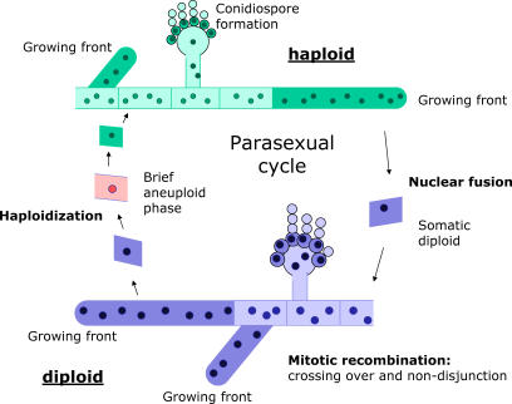In some fungi true sexual cycle comprising of nuclear fusion and meiosis is absent. These fungi derive the benefits of sexuality through a cycle known as parasexual cycle (parasexuality). it was first discovered by Pontecarvo and Roper of University of Glasgow(1952) in Aspergillus nidulans, the imperfect stage of Embericella nidulans.
The parasexual cycle is defined as a cycle in which plasmogamy (fusion of cytoplasm), karyogamy (fusion of nuclei) and meiosis take place but not at a specified time or at specified points in the life cycle of an organism. The members of class Deuteromycetes in which sexual cycle does not occur, exhibit parasexual cycle generally.
Difference between Sexual Cycle and Parasexual Cycle
Sexual Cycle
|
Parasexual Cycle
|
Nuclear fusion takes place in specialised structures.
|
Nuclear fusion takes place rarely in vegetative cells
|
Zygotes usually persist one nuclear generation.
|
Zygote persists through many mitosis.
|
Recombination by meiosis; crossing over in all chromosomes pairs, of reduction chromosome number, and random assortments of members of each chromosome pair are characteristics of the cycle.
|
Recombination by rare accidents of mitosis; mitotic crossing over at each event usually confined to one exchange in a single chromosome arm and haploidisation independent of crossing over are characteristics of this cycle.
|
Products of meiosis can easily be recognised and isolated.
|
Products can be recognised only by application of suitable genetic markers.
|
